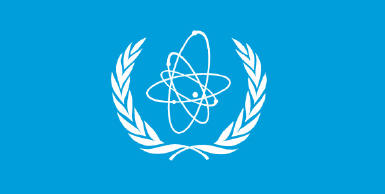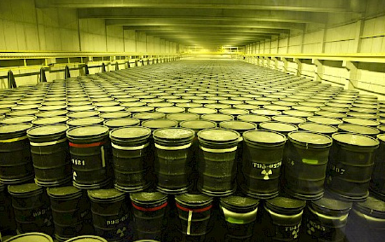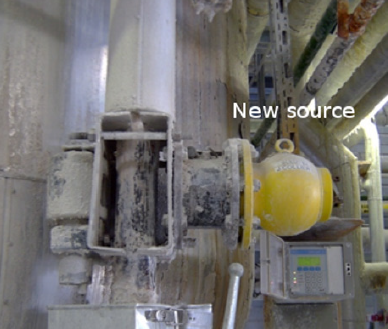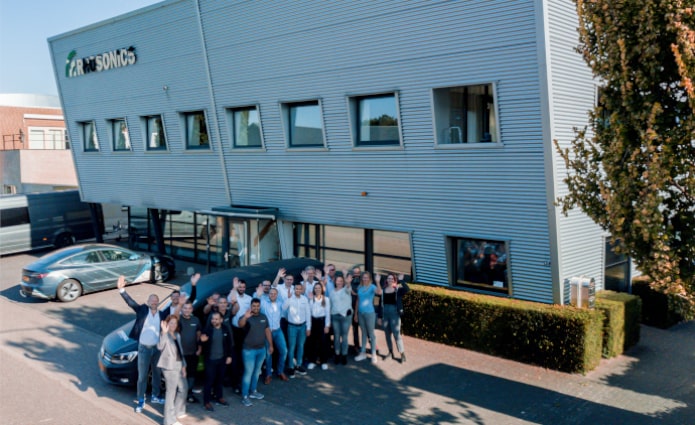Ten issues with nuclear gauges
Are you struggling with regulations and safety measures for your radiation source? You are not the only one. End-users in the mineral processing and dredging industries are often reporting issues to us about their nuclear gauges. In this whitepaper, you can find the ten most reported issues with radiation-based measurement devices followed by a solution to solve these issues.

1. Regulations
Governments are implementing new rules for the use of radioactive sources and existing rules are getting stricter. Without licenses, it is hard for a company to start using radioactive measuring instruments. These changes are supported by the fact that governments are prioritizing care for the environment. At the same time companies want to provide a safe and pleasant working environment for their employees.

2. Disposal
What am I going to do with the old source? The customer expects the supplier to come up with a solution for source disposal. When the source is beyond the usable life, the customer has two options:
1. Store the source on-site
2. Disposal of the source
Some have teams to remove the source, but normally, the manufacturer or supplier of radioactive sources is caring for the disposal of the sources.
In some countries, the manufacturer is even obligated to offer disposal services. In other countries, end-users have to arrange the disposal themselves by searching for an authorized company or responsible authority to carry out the work. There are high costs for the disposal of the source. For example, between 2,000 – 7,000 US$ in the United States, but only if there are no additional costs to solve safety problems with the radiation protection shielding.
3. Inspections
Some governments require the user of the source to hire a company that inspects the level of radioactivity on the outside of the source. This is, for example, required by the Dutch government for the dredging industry. A certified company takes samples from the radiation protection shield and shares the results with the client and local authorities. This inspection is also called a wipe test or a leak test.
First, the surface of the protective shielding is covered and cleaned with an ethanol solution, then a cotton swab is used to check for surface contamination (e.g. with a cobalt-60 radioactive isotope). Typically, license holders who operate a sealed source are required to have the source tested for leakage periodically. Records are reviewed and approved by inspectors and are kept for a certain period (e.g. three years).
4. Storage
The industry needs to track the location of its adioactive sources. If a source is lost, this will cause a lot of problems with the environment and subsequently with the local government. For this reason, some larger companies manage their own warehouses to temporarily store radiation sources during periods in which these sources are out of use. There are a lot of costs for keeping these radiation density meters in stock. Some of these sources are still usable, but others have already reached the half-life before or during storage.

5. Tracking the location
Imagine losing track of a nuclear source. In the worst case, the radioactive source is transported as scrap to a metal recycling plant. This is very risky, because if the source is destroyed this will cause lots of environmental problems. The owner will be kept responsible for this disaster. Subsequently, this will cause lots of issues with local governments.
6. Shutter problems
Nuclear density gauges are equipped with a valve to close the shield and stop gamma particles to be emitted through the pipe. This valve is used for protection against radiation in case of service to the (empty) pipe, for maintenance of the instrument, or during transport of the source. Most nuclear gauges in the field are old and the casing can start to rust because of too little maintenance. It is no surprise that sometimes the shutter (protection valve) of these old nuclear gauges gets stuck or malfunctions. This is an immediate problem. The customer needs to resolve this issue as quickly as possible to prevent health and safety issues.
7. Mandatory training
Maintenance and calibration of the radiation source are needed periodically. Authorized technicians are the only staff who can service the nuclear density gauges. Usually, the source is located in a special safety zone with limited access. Radiation safety training is obligatory for people who work with radiation devices, as is determined by governmental regulations in most countries.
Training certificates are provided and monitored by government bodies or licensed organizations (the trained personnel is usually entitled with the name of radiation safety officer, or RSO). When an RSO leaves the company, a new employee has to be trained to install, repair, and adjust the radiation-based density meters. At least one radiation safety officer needs to be on-site. This could also result in difficult situations if someone is temporarily unable to work. A lot of time and costs are spent on training to comply with obligated safety procedures.
8. Performances (half-life)
Old source holders may last for 30 to 50 years while the transmitter may last one year to 50 years based on experiences of local service providers. Older sources usually have a longer life span compared to those manufactured today. The radiation activity is decreasing over time (as is the accuracy). When the source activity is too low, the nuclear gauge cannot be used anymore for density measurement. The usable life of the nuclear source depends on the activity of the
source and the half-life of the radioactive isotope.
The half-life is the time taken for the radioactivity of a specified isotope to fall to half its original value. Different isotopes have different half-lives. High activity of the source means a longer life span and a higher accuracy. Lower activity means a shorter life of the system and less accuracy. Sometimes the life span can be extended by replacing the old detector with a new one with better properties, but this is a temporary solution. Generally, the source holder lasts longer than the transmitter (detector).
9. Transportation
Transportation of the nuclear density meter is expensive and difficult. Special transport needs to be arranged, because of the isotope and heavy weight of the radiation shielding. The source can reach a weight of 500 kilos or even more, due to materials such as lead which is used for radiation protection. This is a well-known issue in the industry. Transportation is also monitored by governments that want to be sure that these radiation sources are not getting lost or that the
wrong parties come into possession of these radiation sources.
10. Health and safety
The intensity of the source is different for each application. Larger pipe sizes and high solid contents are both requiring higher radiation activity. The source shielding can be damaged over time, due to the harsh environment of the mineral processing and dredging industries. Also, the thickness of the radiation protection shielding can be limited due to costs savings of the manufacturer to comply with the budget of the mining customer at the time it was sold.

The shielding of some of the old nuclear density meter installations is in terrible shape which means that it is not safe for employees to work with these devices. Staff can be exposed to radiation without health risks for a short time. However, it isunhealthy when the staff is working around these (old) nuclear devices for longer periods of time.

Conclusion
Additional work and costs are involved to comply with regulations for nuclear density meters, besides health and safety issues. For this reason, a lot of companies are seeking alternative methods to measure the density in their production processes.
The mentioned issues in this whitepaper are reported by end-users and service providers who work with radiation-based measuring devices in the mineral processing industries. Please note that these issues can be different for each industry and region, depending on the restrictions of local governments. There are certainly more issues to mention and not all are included in this list.
Need help?
Rhosonics is helping the industry to eliminate all costs and risks associated with the radiation source. Nuclear density meters have been dominating the market for decades, but are nowadays no longer needed. Are you experiencing the same issues as mentioned in this whitepaper? Then please contact us for help.
Other languages:
Whitepaper in ES
Whitepaper in FR
Whitepaper in PT
Contact
Phone: +31 341 370 073
Email: info@rhosonics.com
Website: www.rhosonics.com
Get in touch with Rhosonics for further information about chemical concentration or density control. If you want to learn more about our applications, then please also check our client cases and webinars.
Want to have frequent updates on our products? Then please subscribe to our newsletter or follow us on our social media accounts at LinkedIn and Facebook.
Receive our technical update?
Fill in your name and email address and we’ll keep you in the loop on our latest technology updates.



